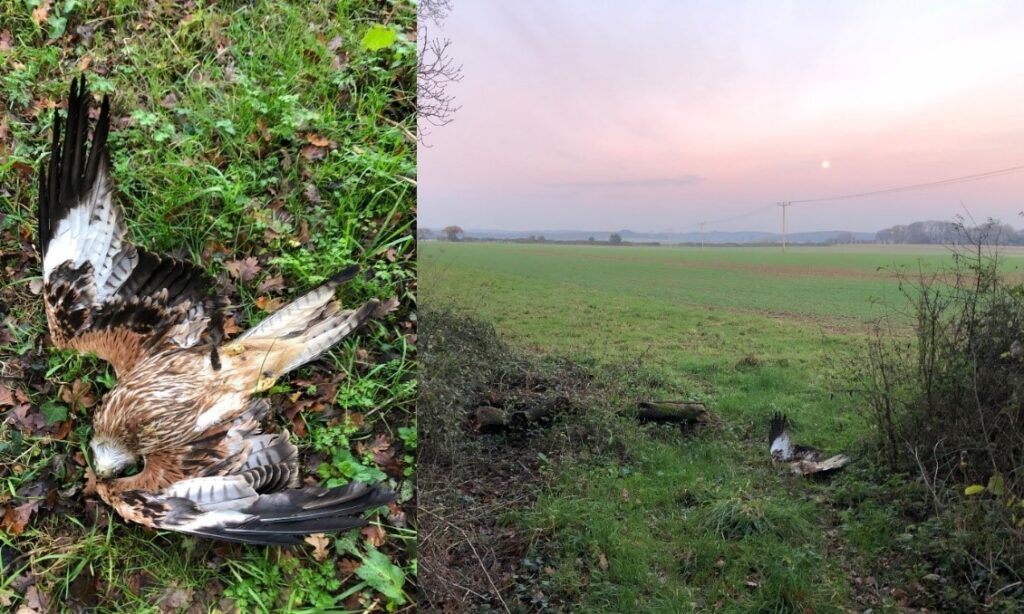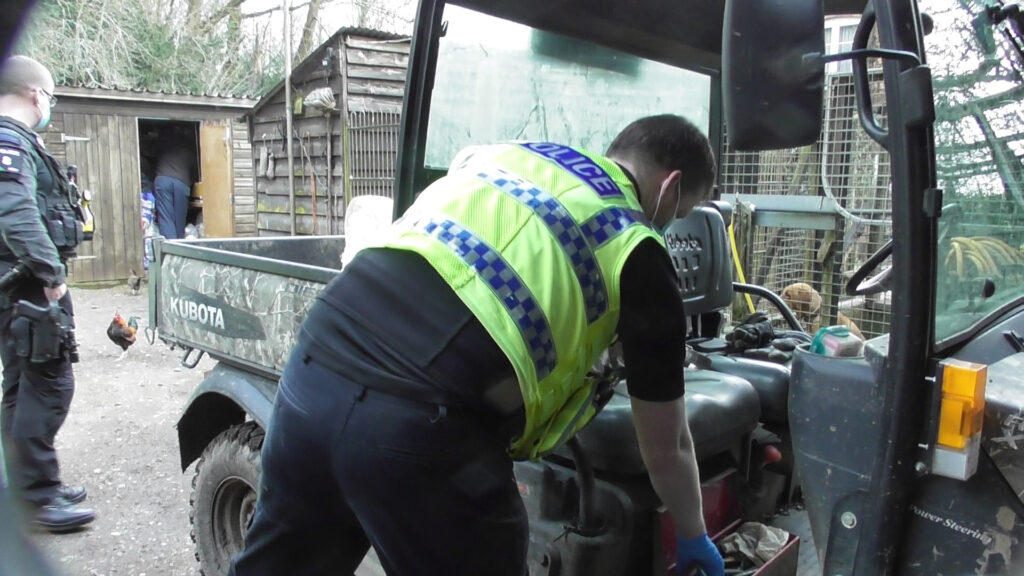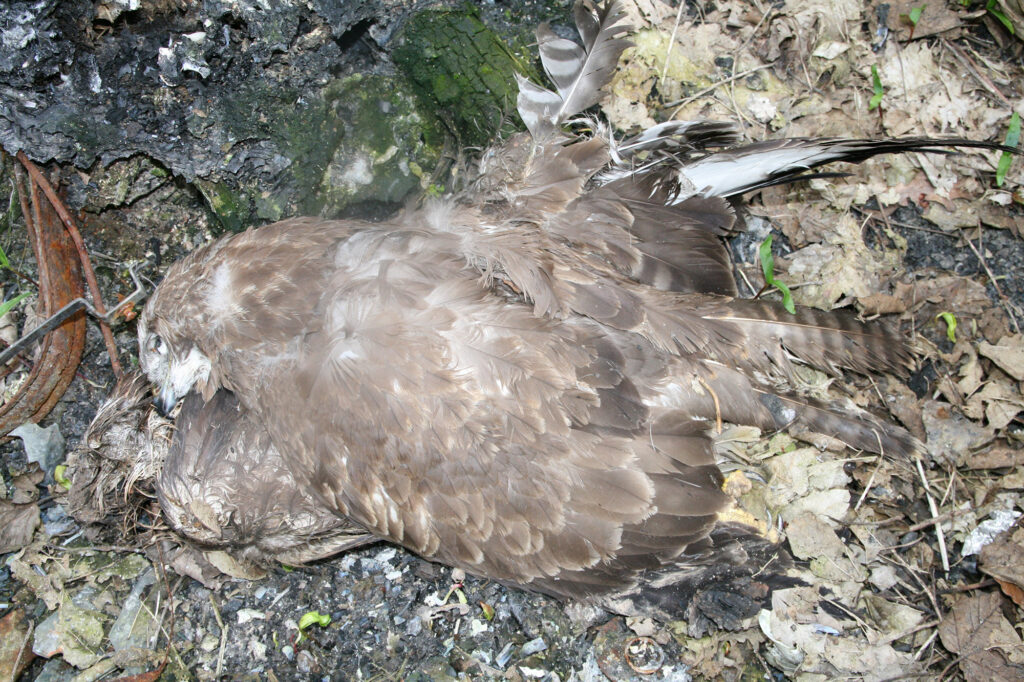Wild Justice funding: helping to track down the raptor killers (guest blog, Guy Shorrock)
In 2020, Wild Justice initiated a Raptor Forensics Fund to help police forces across the UK to tackle wildlife crime. A £10K funding pot was established with donations from WJ, Northern England Raptor Forum, Tayside & Fife Raptor Study Group, Devon Birds, and a number of individuals who wish to remain anonymous.
This guest blog, written by Guy Shorrock (a member of the PAW Forensic Working Group and former RSPB Senior Investigator) provides an insight into how these funds were used recently to investigate and successfully convict a gamekeeper in Dorset.
EARLY DAYS
I spent some 38 years working in enforcement, just over 30 of these with RSPB Investigations. As former colleagues will testify, one of my favourite expressions was ‘You can’t beat a good clue‘; and it has to be said that some of the very best come from forensic examinations, often revealing things simply invisible to the human eye.
When I joined RSPB in 1991, they had just started their last private prosecution, involving the first UK wildlife case using DNA profiling which showed the captive breeding claims of a goshawk keeper were false as the three chicks had been taken from the wild and, unsurprisingly, were not related to the declared female parent. Despite the derisory £100 fine, it was a seminal moment in wildlife crime investigation. With my university background in science, I was keen to get involved and over the next few years initiated, or was involved with, several cases of raptor laundering, mainly peregrines and goshawks.
It was RSPB and the Department of the Environment (now Defra) who drove most of this work & supported police & CPS prosecutions. Two high profile cases, involving extensive peregrine laundering, led to two men receiving custodial sentences. I believe these cases were instrumental in the formation of the Partnership for Action against Wildlife Crime (PAW) in 1995. This led to many developments, most significantly the later formation of the NWCU, but also the PAW Forensic Working Group (FWG). I have been fortunate to have been involved with the FWG since it started in 1996, and the group has been blessed with a succession of dynamic and highly capable people from various professional backgrounds.

CURRENT SET UP
The FWG continues to promote the use of forensics in wildlife crime investigations and has set up a range of initiatives & projects. One of these was the Forensic Analysis Fund – which provides financial support where forensics or specialist examinations are needed during an investigation. However, one area which had always been a problem was initial funding for things like x-rays and post-mortems to confirm a crime had even taken place. Many WCOs have helpful arrangements with local vets and can get some work at little or no cost. However, in many potential raptor persecution cases, the RSPB had to cover costs to get things kick-started.
Helpfully, in 2020 Wild Justice made £10K available to help cover these initial costs in potential raptor persecution cases under a scheme administered by the FWG. Police can now get initial investigative costs of up to £200 quickly covered, and more funds are available on application. At later stages in the investigation, where normally the Forensic Analysis Fund provides police with match funding, the WJ Raptor Forensics Fund covers 100% of forensic costs for raptor persecution cases. This money has been very helpful in numerous cases, and in connection with four prosecutions.
CASE IN POINT
The most recent conviction of a gamekeeper in Dorset on 16 February 2023 for seven serious charges has been well reported in the media. This case provides a great illustration of the sequential use of forensics tests and how the Raptor Forensics Fund can be used effectively. In November 2020, local Johanna Dollerson was out for a walk on the Shaftesbury Estate when she came across a dead red kite. There was a dead rat lying nearby and, concerned something untoward may have happened, she called Dorset Police. The public remain the eyes and the ears in the countryside, and of the cases that do eventually get to court, many have relied on people being alert to unusual events and taking the trouble to report them.

The following day an officer recovered both items and they were initially taken to a local vet. As poisoning was suspected, the red kite and a liver sample from the rat were submitted to the government’s Wildlife Incident Investigation Scheme (WIIS), this is overseen by HSE with the day-to-day work done by Natural England (NE).
Sure enough, following an initial post mortem at APHA to collect samples, the toxicology work by Fera confirmed abuse of the pesticide Bendiocarb in the red kite. The rat liver was negative. Bendiocarb has become a persistently abused pesticide for the killing of raptors, the product Ficam W being the most common source of this. This very toxic product is only for professional use, and people need to be appropriately trained and have a suitable and secure pesticide store. This product was actually banned just a few weeks after the red kite was found, though I have no doubt that the abuse of Ficam W to kill raptors and other wildlife will continue for many years. The kite also had an astonishing nine times the lethal level of the rodenticide Brodifacoum in its system so would no doubt have soon succumbed to this, had not also been exposed to Bendiocarb.
With it being an abuse case, it was referred to the Dorset Police Rural Crime Team and into the capable hands of WCO PC Claire Dinsdale (now with the NWCU). Police identified the gamekeeper running a private pheasant shoot being on the estate, and I assisted with the planning of the operation. Until June 2020 he had been employed for many years by the estate, but was now with a new employer, though remaining as a tenant at his long-term address. Further enquiries established he had purchased several sachets of Ficam W in 2018 – this extra information enabled the police to obtain a search warrant, allowing a search of his address as well as the land.
Many years ago, I had filmed a gamekeeper on this estate, retired but still doing some predator control, visit an illegal spring trap set in the open on the ground next to a dead pigeon bait inside a pheasant pen, most likely targeting buzzards. For reasons still unclear, no formal police action was taken, so I hoped this time things would go more smoothly.
On the 18 March 2021, Dorset Police led a multi-agency search supported by the NWCU, NE and RSPB. By a pen close to the rear of the gamekeeper’s home were the bodies of six dead buzzards, two lying next to the remains of a fire. The circumstances suggested the bodies were awaiting disposal by burning.

A quick check of the ashes indicated the remains of at least one raptor and these were seized along with the buzzards.

Nearby, under an old pond liner, were two tins of the fumigant pesticide Cymag. This gives off the very toxic hydrogen cyanide gas when brought into contact with moisture and storage like this is dangerous as well as illegal. Cymag was legally used to gas rats and rabbits until the end of 2004, though it also has a bad reputation for use in the illegal gassing of badgers and foxes. This particular brand was probably banned in the 1990s. In the rear yard were a number of insecure outbuildings and his 4×4 Mule vehicle. In a toolbox in the vehicle were three small pots containing a powder – later confirmed as Bendiocarb. The footwells of this vehicle were also swept by the CSI and traces of Bendiocarb were also detected in the dirt.


In an outbuilding was a part-used sachet of Ficam W (Bendiocarb), a product which had been banned three months earlier. Next to this was an old rodenticide container, and inside this were hidden two small bottles of Strychnine, another product banned since August 2006. In previous cases suspects have claimed no knowledge of any pesticides and stated they must had been languishing in outbuildings for many years before they arrived. I know of one case where this was probably true. A helpful clue in this case was an ‘01’ phone number on the old rodenticide container, this reflected the national ‘PhONEday’ number changes in 1995, which was after the gamekeeper had first taken up residence at the address. BT Archives kindly provided a statement to cover this point.
There was actually no appropriate pesticide store at his premises, so even an approved professional brand of rodenticide was insecurely and unlawfully stored. Guilty pleas were later entered to the keeping of the three banned pesticides.

THE FORENSIC TRAIL
Once the evidence had been seized, various forensic tests needed to be considered. Firstly, using the Raptor Forensics Fund, the six buzzards went for screening x-rays at a local vet which clearly indicated they had all been shot. With this information, the birds were sent for a post mortem examination at Scotland’s Rural College (SRUC) under the skilled hands of experienced pathologist Fiona Howie. In addition to confirming all had been shot, it also established one of the bodies was very fresh and probably shot within a day of us arriving at the address. Interestingly, this particular bird had survived two previous shooting incidents.


We were obviously interested in what was in the fire remains and the Raptor Forensics Fund allowed us to submit these to Judith White, a Curator and avian specialist at the Natural History Museum. When I attended to collect them, they had been cleaned and neatly divided into 34 individual exhibit bags. The examination had confirmed there were the remains of at least three further buzzards from within the ashes. So, using nearly £900 from the Raptor Forensics Fund, these three examinations had produced some powerful evidence.

The preparation of the case file for the CPS was a huge amount of work, and Claire Dinsdale deserves great credit for her tenacity in completing this. As this was underway, myself and Dr Ed Blane, a highly experienced employee of Natural England, became aware that the original rat carcass had been described by the vet as being ‘cut open’. We were immediately concerned this was a potential bait which may have killed the red kite. Small prey items like these are not particularly common, and I couldn’t recall any previous cases using a rat bait. Back in 1999 I had found a couple of dead starlings laced with a banned pesticide right on the edge of the RSPB reserve at Geltsdale in Cumbria. A nearby breeding female hen harrier was later confirmed as poisoned with this product. In 2008, 32 pieces of meat laced with another banned pesticide were found placed on fenceposts on the Glenogil Estate in Scotland.
Thankfully, the body of the rat was still safely stored in the vet’s freezer and the Health & Safety Executive kindly agreed to submit it for further toxicology tests at FERA, which confirmed the presence of Bendiocarb. We also decided to try and identify the food contents found in the red kite and a sample was sent from FERA to the UK Wildlife DNA Forensics Laboratory at SASA. This laboratory, led by Dr Lucy Webster, has been doing some amazing work on wildlife genetics, and has provided vital evidence in many investigations and court cases. Police Scotland are fortunate to have any wildlife forensics done there free of charge. Other UK forces are not so lucky, so once again the Raptor Forensics Fund allowed this work to progress and SASA confirmed the tissue as being from brown rat. So there now seemed little doubt the red kite had been poisoned at the location where it was found. This additional evidence allowed the CPS to proceed with a charge of killing the red kite. Whilst this was ultimately one of three charges discontinued at court, I have little doubt it put the CPS in a very strong position and encouraged the seven guilty pleas that were entered.
All investigations are ultimately about seeking the truth as to what has taken place. This case provides a great example of how forensic testing can provide essential evidence in a wildlife crime investigation. The scientists undertaking this type of work (in this case at APHA, FERA, SASA, SRUC, and NHM) are often the unsung heroes of many successful court cases. It is their professionalism and attention to detail which provides police and prosecutors with the information to take matters forward. As technology continues to advance it will be interesting to see what other methods will allow some of the raptors killers to be brought to justice.
ENDS
